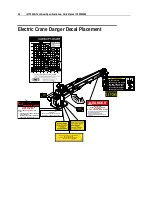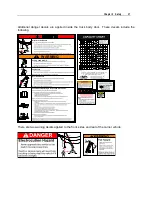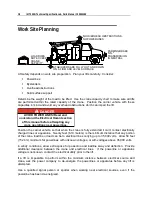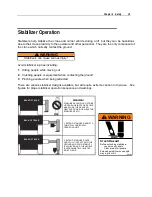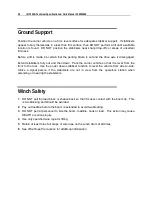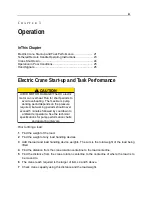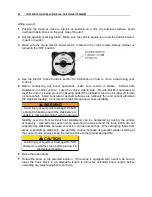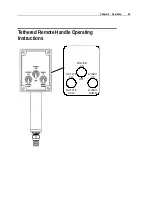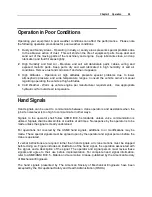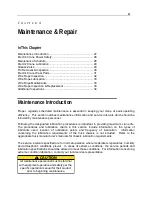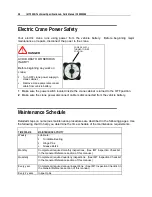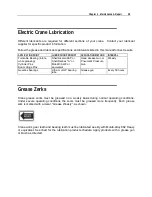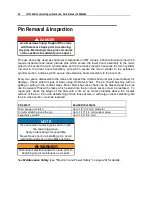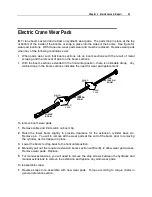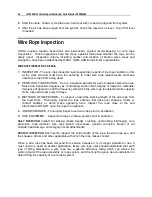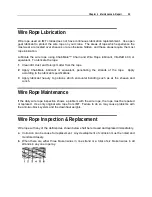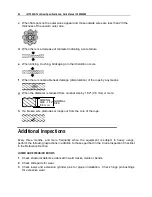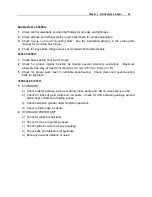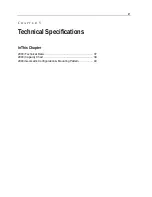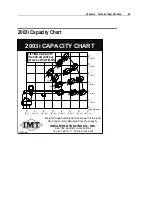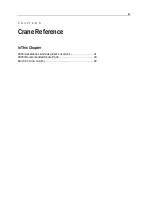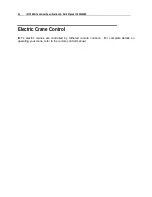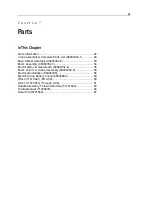
30
IMT 2003i Technical Specifications & Parts Manual # 99904385
Pin Removal & Inspection
DANGER
Avoid serious injury! Support the crane
with hoists or straps prior to removing
any pins. Removing crane pins can cause
crane sections to suddenly come apart.
Pins are frequently used as structural components on IMT cranes. Critical structural pins which
require inspection and repair include pins which secure the lower boom assembly to the mast,
pins which secure the main cylinder base end to the mast, pins which secures the main cylinder
rod end to the lower boom assembly, pins which secure the main cylinder to the extension
cylinder section, and pins which secure the extension boom assembly to the boom tip.
Every two years, disassemble the crane and inspect the critical structural pins (noted above) for
damage. Check pins for signs of wear, using Pin Defect chart. The pin should be shiny with no
galling or pitting in the contact areas. Minor blemishes (see chart) can be dressed and the pins
can be reused. Pins with cracks which extend into the pin cross section must be replaced. To
repair pins, dress the edges of the flaw with a file so no metal protrudes above the circular
surface of the pin. Pins with defects larger than those listed, or with large cracks extending into
the pin cross section, must be replaced.
PIN DEFECT
MAXIMUM TOLERANCE
Nick, gouge or scratch
Up to 1/8" (3.2 mm) diameter
Circular scratch around the pin
Up to 1/16" (1.6 mm) wide or deep
Lengthwise scratch
Up to 1/32" (0.8 mm)
NOTE
Use care when removing pins not to crush
the snap ring groove.
Apply a lubricating compound like
Never-Seez prior to reinstalling pins. Avoid
getting Never-Seez on Gar-Max bushings.
WARNING
Disconnect electrical power to crane prior to
beginning major maintenance or repairs.
See
Maintenance Safety
(see "Electric Crane Power Safety" on page 28) for details.
Summary of Contents for 2003i
Page 2: ......
Page 6: ......
Page 38: ......
Page 77: ...Chapter 8 General Reference 75 X R CA ITEM EXPLANATION DATE CORRECTED ...

